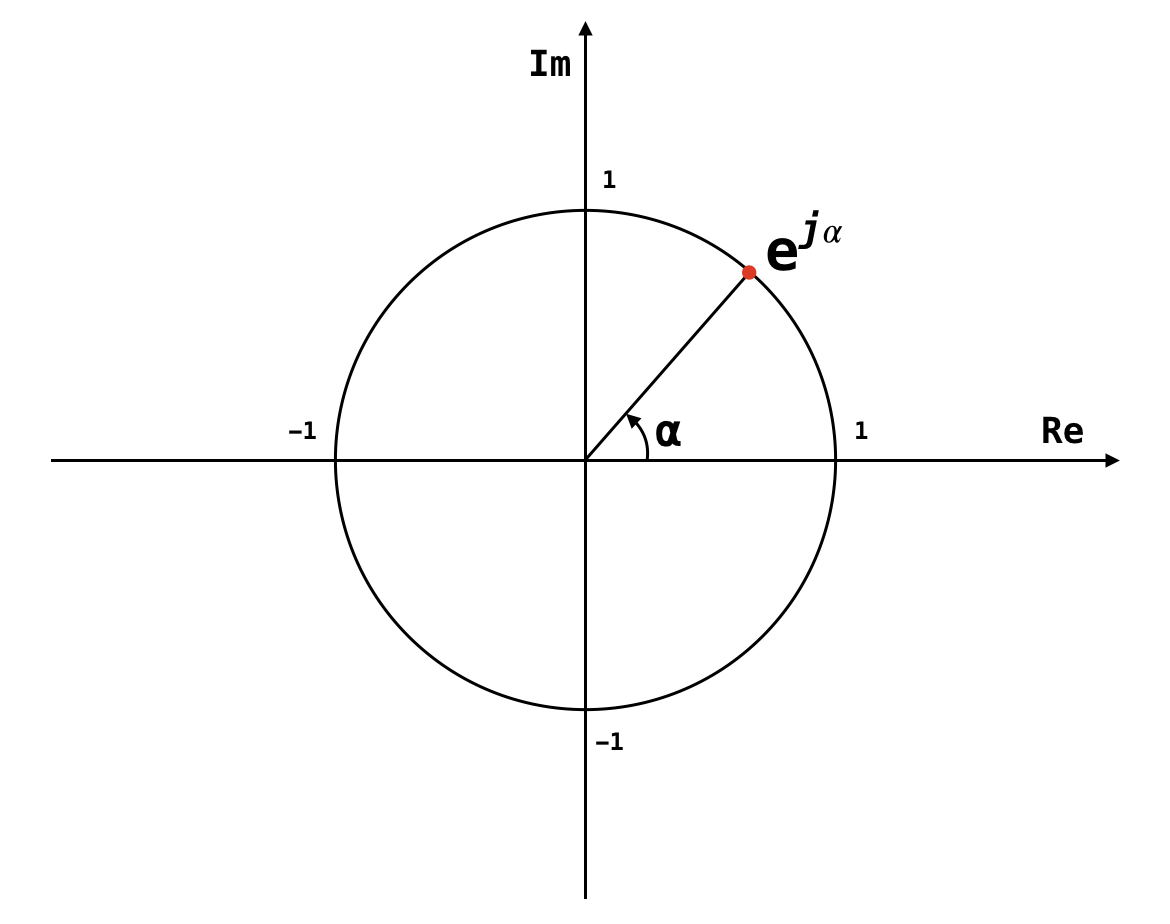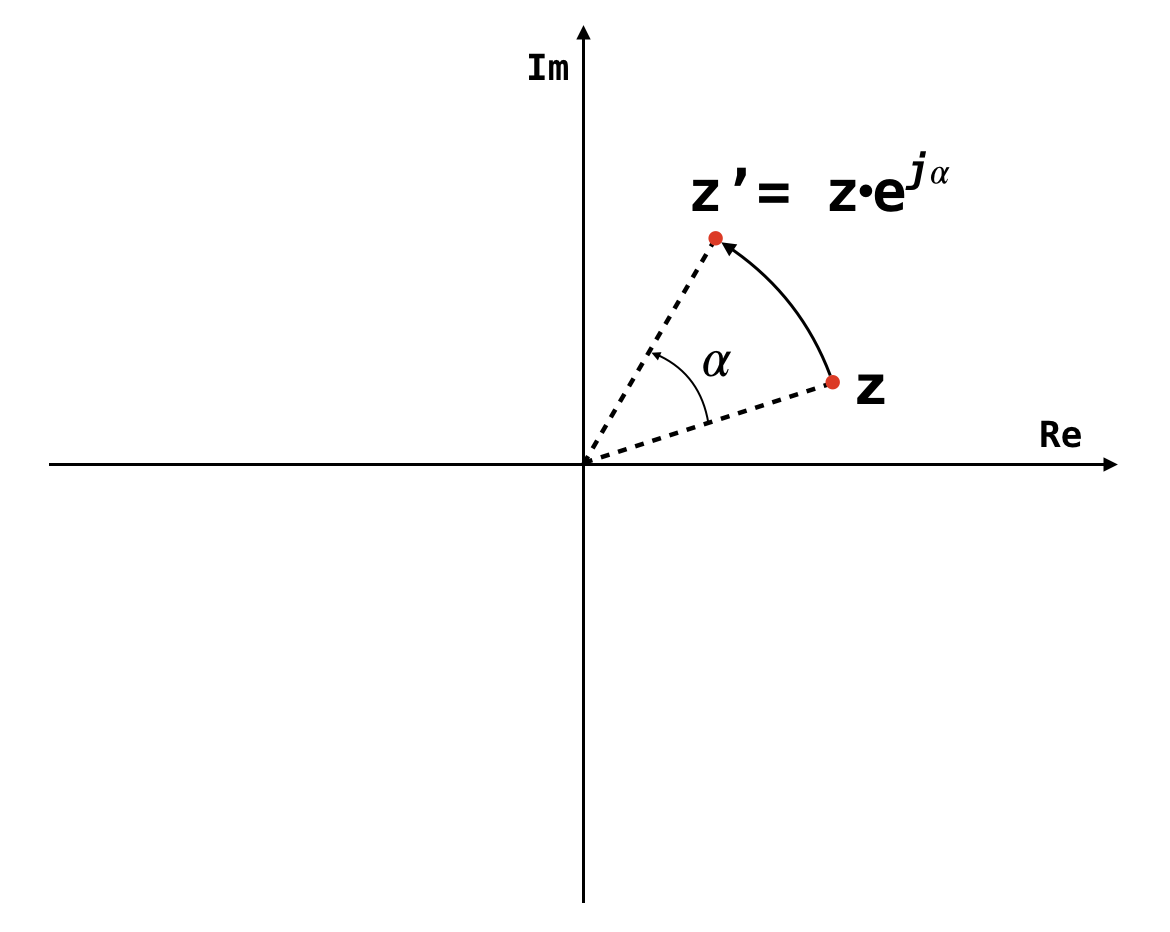[DSP] W01 - Complex Exponential
oscillations
- oscillations are everywhere
- sustainable dynamic systems are always oscillatory
- things that don’t move in circles don’t last
- bombs
- rockets
- human beings (only partially oscillatory)
clip: gyroscopic stability of a disc player in zero-gravity - OFF vs. ON
- an oscillation is cyclic, it goes around in circles
- all oscillations can be described with a combination of cosine and sine functions
representing an oscillation
- a complex reference system centered on the origin of the oscillation is used for this
- a complex exponential is used to describe the position on the plane of oscillation
- , where is the complex exponential
- : rotation/oscillation frequency
- : physical domain time

fig: complex exponential in complex plane with sin and cos functions
- trigonometric expansion of complex exponential:
- called euler’s formula
sample notation with complex exponential
- : discretized sample notation
- complex exponential sample notation
- trigonometric complex sample notation
- where:
- : frequency (radians)
- : initial phase (radians)
- : amplitude
- note that phase and frequency are both in radians when using the complex exponential paradigm
complex exponential notation
justification for use in dsp
- every sinusoid can be written as a sum of the sine and cosine
- sine and cosine live together
- trigonometry becomes algebra, so notation is simpler
- helps avoiding the use of trigonometric identities
- significantly reduces the number of terms in equations
- phase can be managed with exponent summation and split rule
- phase shifts are simple complex multiplications
- helps avoiding the use of trigonometric identities
- complex numbers can be used in digital systems without obstacles
anatomy of the complex exponential
- polar form of complex exponential:

fig: on the complex plane (argand diagram)
- is a unit circle on the complex plane
- unit circle:
rotation about the origin complex plane
- say is a point on the complex plane
- by multiplying it with
- is rotated about the origin
- in the anti-clockwise direction by amount
- about the origin
- with radius of rotation

fig: rotation by multiplication with
- this rotation operation is the basis of the complex exponential generating algorithm
- used to synthesize signals
- with an initial phase:
- used to synthesize signals
- in discrete time, a sinusoid is periodic only if:
- ;
- i.e. only if:
- frequency, , is a rational multiple of
- or equivalently, if
- so not every sinusoid is periodic in discrete time
aliasing
- the same point in the unit circle may have many names:
- the point at can
- the point at can
- this is called aliasing
- natural property of complex exponential
-
in discrete time, this limits how fast we can go around the unit circle with a discrete-time signal
- the frequency of the discrete-time machine is limited
- when it is faster than , due to the periodicity of the complex exponential,
- we fall back via a modulo operation
- even within the range, care must be taken between backwards and forwards motion
- when ,
- the point simply oscillates between and on the unit circle
- when
- it can also be view as rotation backwards to get that point
- it is shorter to get to that point in the backwards direction
- so anytime ,
- it appears like a smaller step in the clockwise direction
- this reverse effect aliasing is even more pronounced when is close to
- if , the rotating body appears stationary due to aliasing
- when ,
- so at different frequencies, i.e. values, aliasing introduces different artifacts of illusion
eigenvalues and eigenvectors
- almost all vectors change direction when they are multiplied by a matrix
- however, certain vectors are in the same direction even after multiplication with that matrix
- those certain vectors are eigenvectors
- since they are the in the same direction, multiplication with the matrix is like scaling the original vector
- the equivalent scaling factors are called eigenvalues
- consider equation:
- : square matrix
- : eigenvalues of
- : eigenvectors of
- rearranging this, we get:
- from this we get A’s characteristic equation:
- where : determinant of matrix
- the roots of this equation are eigenvalues
- from this we get A’s characteristic equation:
-
having computed the eigenvalues , the eigenvectors can be found using
- if eigenvector elements can take on arbitrary values based on a relationship between them, make sure to normalize them with the square root of the sum of squares of all elements
- i.e. normalize it with the length (first modulus) of the vector